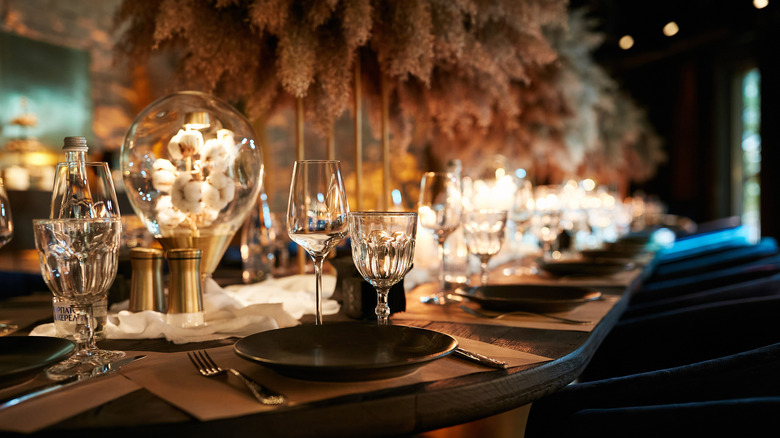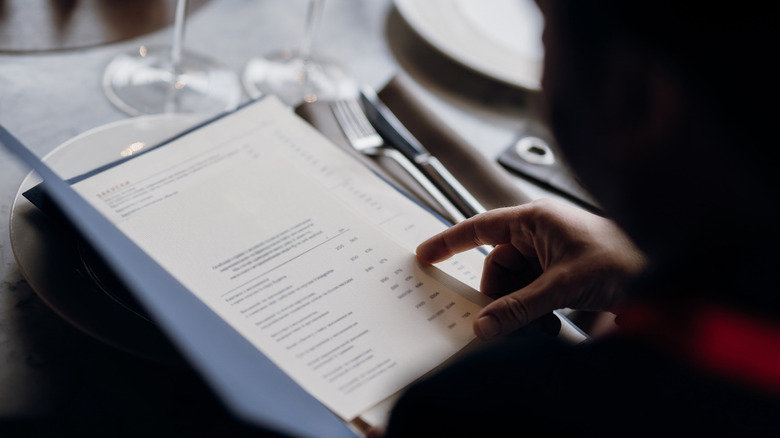The Fine Dining Menu Rule You Probably Don't Know
In a world of QR-coded menus and trendy pop-up restaurants, etiquette almost seems to be a forgotten rule of the past. But thanks to finishing schools and workshops, servers and diners are learning which fork to use for which course and how to place napkins on tables correctly.
At some events like weddings and awards ceremonies, meals are arranged in advance, and separately plated courses are brought to diners. When a menu is offered at a finer establishment, it is not the host, but the guests, who should set the pace for the evening to come (per Lanzerac). Guests order first, and the host mirrors the number of courses that have been chosen (via The Walnut Room). While basic manners like sitting straight, speaking clearly, and making eye contact are more well known, there's one decorum detail you might have missed. And it has everything to do with the menu.
A small move can make a big impression
Myka Meier, founder of Beaumont Etiquette and The Plaza Hotel Finishing Program, was trained "under a former member of The Royal Household of the Queen." Meier provided a short class for Food & Wine, instructing diners on the proper way to look through a menu. "In formal dining, the menu should always be touching the table in one place," advised Meier. This means the menu should never be lifted off the table or held in front of your face.
Research has shown there's a perfect number of dishes for fine-dining restaurants to list on their menus (10 mains and seven starters and desserts), but sometimes circumstances can lead to overwhelming moments. When anxiety hits, remember that the best way to glance at a menu is to remain seated upright, resting at least one part of the menu against the table.
While this is a minor adjustment, the move can make a major difference if you're trying to demonstrate proper etiquette in a formal setting.

